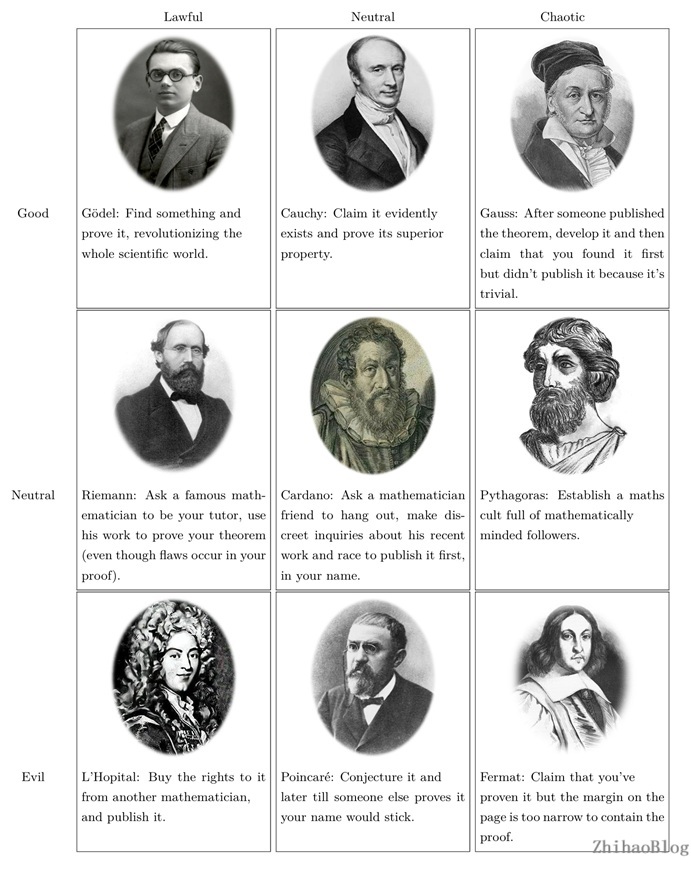How to Get a Theorem Named after You
Today I read a funny 3*3 alignment chart of mathematicians and I’d like to develope and share it.
If you ask these people, How to Get a Theorem Named after You:

Here are some explanations.
- Kurt Gödel. He is renowned for his Gödel Incompleteness Theorem.
- Augustin-Louis Cauchy. Bolzano introduced Cauchy sequences first. Later Cauchy gave a proof, taking the nested interval principle, which was later justified by Cantor, as obvious.
- Carl Friedrich Gauss. Around 1800 Legendre published his formula to approximate the distribution of prime numbers. In 1849 Gauss wrote to Encke saying that he had found a better formula in 1793. It turned out that Gauss’s formula was more accurate and the form was simpler. It is called Gauss Prime Number Formula or Prime Number Theorem (PNT).
- Georg Friedrich Bernhard Riemann When proving Riemann Mapping Theorem, Riemann used his tutor Dirichlet’s work as an assumption, which was found wrong by Hilbert.
- Girolamo Cardano. In 1539, Tartaglia found the solution to cubic equations of certain kinds. Hearing about this, Cardano started to write to him and their letter conversation lasted 3 months. Finally Caradano promised to keep the formula a secret and Tartaglia gave him it. In 1545, Cardano’s book Ars Magna (or The rules of algebra) came out, in which he published the solutions to the cubic equation and the quartric equation, the latter one was found by his assitant Ferrari.
- Pythagoras. (Everyone knows Pythagoras Theorem.)
- l’Hôpital. (Everyone knows L’Hopital’s Rule.)
- Jules Henri Poincaré. (Everyone knows Poincaré’s Conjecture, or Poincaré Theorem proved by Perelman.)
- Pierre Fermat (Too chaotic, too evil, Fermat’s Last Theorem.)
